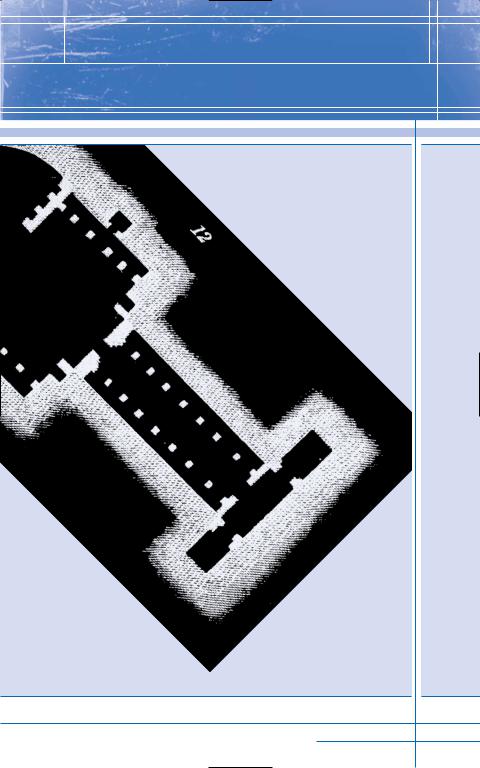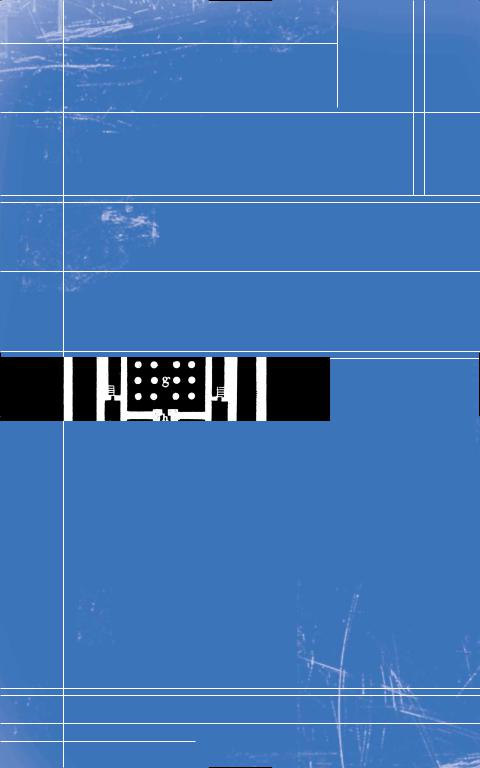
- •Table of Contents
- •Introduction
- •The 5 Dramatic Throughlines
- •The 6 Conflicts
- •The 21 Genres
- •The Replay
- •Fate
- •The Parallel
- •The Episodic
- •The Journey
- •Interactive
- •Metafiction
- •The Slice of Life
- •Introducing the 55 Dramatic Situations
- •Situations 1 & 2
- •Situations 3 & 4
- •Situations 5 & 6
- •Situations 7 & 8
- •Situations 15 & 16
- •Situations 17 & 18
- •Situations 43 & 44
- •Situations 45 & 46
- •Situations 47 & 48
- •Situations 49 & 50
- •Situations 51 & 52
- •Research

The Slice of Life
CEREMONY BY LESLIE MARMON SILKO
I will tell you something about stories (he said)
They aren’t just entertainment.
Don’t be fooled.
They are all we have, you see, All we have to fight off illness and death.
You don’t have anything if you don’t have the stories Their evil is mighty
but it can’t stand up to our stories. So they try to destroy the stories
let the stories be confused or forgotten. They would like that
They would be happy
Because we would be defenseless then.
He rubbed his belly. I keep them here (he said)
Here, put your hand on it
See. It is moving.
There is life here
for the people.
And in the belly of this story the rituals and the ceremony are still growing.
The Slice of Life |
93 |

The Slice of Life plot structure can be defined as a momentary glimpse of reality rather than a carefully composed, formal imitation of it. By its very nature it rejects the tradi-
tional three-act structure and is therefore more open to multicultural types of storytelling.
Since the eighteenth century, the French have had what is called the anti-novel, where novelists free fiction from the expectations of conventional ideas about plot and characterization.
Slice of Life Structure
Again, there is no sense of a clear three-act beginning, middle, and end to a Slice of Life piece, but there is an incident of some sort in the beginning that gets things rolling:
This structure is definitely character oriented but not necessarily character driven. There is usually an Inciting Incident, in the form of a circumstance, in the beginning of the story, but its use is to give a reason for telling the story and not drive the story toward a definite Goal and Climax. In fact, some of the writers of these stories feel they are an exploration into the human condition and relationships, that a day in the life of a character, without a Climax and Resolution, is just as valid a storytelling model. We have just become conditioned to seek out the Problem, Goal, and Climax in our entertainment and devalue stories that don’t provide it.
Slice of Life stories are very stream of consciousness. Some Slice of Life writers set out to challenge our expectations regarding literature and entertainment, and other Slice of Life writers are writing from a cultural perspective that is not influenced at all by traditional Aristotelian structure. (Many Native American stories, for example, do not draw a distinction between prose and poetry.)
This is not to say that those who write without plotting are writing a Slice of Life piece. On the contrary, many who write this way still have the traditional plot structure in their work because it has become so ingrained into westernized culture. It is almost impossible for most Westerners to write without Traditional Structure unless one has never seen a television show, watched a movie, or read a book.
Many people judge Slice of Life stories as bad, wrong, boring career killers and try to force students into the traditional three-act structure. In many ways, this is a shame, as they are not honoring the
94 Story Structure Architect

differences in writers and in storytelling as they should. There is an audience for every mode of expression.
Some successful Slice of Life stories include the following:
•The film Before Sunrise did so well they have released a sequel to it titled Before Sunset.
•Spike Lee protégé Lee Davis has created a Slice of Life piece titled 3 AM where he takes the viewer into the world of taxi drivers.
•Daughters of the Dust is a fairly famous Slice of Life film used in many Western universities.
•English director Jamie Thraves created The Low Down, which follows a twenty-something Londoner through that difficult time in life when you realize your youth is ending and you’re not ready to grow up.
•Anton Chekhov’s An Upheaval is a great example for a novelist. It is an observation of life within an upper-class household where the reader is left without a resolution. It is a sort of right-of-passage story.
So how do you write a Slice of Life piece? You select a moment in time, or a character that interests you, and you just start writing, paying attention to the details of everyday life. In a traditional story your character may not stop to smell the roses, but in a Slice of Life piece he may. He could sit and ponder an anthill or meet a girl and just walk around the city (Before Sunrise).
The key is to have interesting characters for the reader to watch and to have a rich setting to work with. It’s like a voyeuristic look into a character’s daily life. Read the reviews of Daughters of the Dust on Amazon.com, where it is referred to as a visual miracle.
I use the terms Act I, Act II, and Act III just to keep things consistent with the rest of the book. They are only frames of reference.
Slice of Life Elements
ACT I TRADITIONAL ELEMENTS
• Setup
ACT I NEW ELEMENTS
While there is a Setup, it is not one that presents a great problem to be solved. The character may have a sense of wanting to go on an inner journey or nothing at all. Something may take him by surprise, like the meeting of a pretty woman or the loss of a job, to show the reader why you have chosen this moment to write about. But like in real life where things don’t clean up quickly and easily, this character won’t be resolving this Setup quickly and easily.
The Slice of Life |
95 |

Act I may end with a decision by the character to go somewhere or do something, but his goal is just to see what will
happen—to go with the flow.
Make sure you have spent a lot of time on developing your setting and visual elements, even if you are writing a novel.
ACT I QUESTIONS
•Why do you want to write this type of story?
•Is there a theme you would like to explore?
•How many characters will you have?
•What different settings can you use to make it more interesting?
•If writing a movie script, how can you make this visually pleasing?
•Is there a feeling or mood you want to invoke in your audience?
ACT II TRADITIONAL ELEMENTS
•Turning Point: There may be a small Turning Point that is more like a new Setup that does not state a Serious Problem or Goal. It is more like an observation or a chance happening that the character had little to do with.
ACT II NEW ELEMENTS
The observation or exploration continues. Time moves forward, setting, people, places, and objects change.
The character may discover new things, see things differently, or ponder deep questions that relate to the theme. In Before Sunrise, two characters spend the night wandering the city together—eating, playing, and talking.
A new area of the character’s life can be explored. If you were primarily in the Main Character’s work environment you can switch to his home environment, for example, or from his family life to his work life.
This is where more of the character’s psychological makeup can be shown.
Other characters can be brought in with problems and goals of their own but they don’t become the main focus of the story or of the Main Character’s attention.
ACT II QUESTIONS
•Will you reinforce a theme here?
•Can you change locations or spice things up to show how the Main Character behaves in different places?
96 Story Structure Architect

•Will you bring in some new characters?
•Is there anything that will shock your reader?
•Why would you read this story? What does the reader take away from it?
ACT III TRADITIONAL ELEMENTS
• Not applicable
ACT III NEW ELEMENTS:
The setting, time, place, etc. may change to show the Main Character, in a new way, with a new stimulus.
Other characters can come and go or stick around.
ACT III QUESTIONS
•How will you show that the story is over? Is it the end of the Main Character’s day so we see him walk into his house and shut the door? Or do we get a sense that the story is never over but continues on and on?
•Will you reinforce the theme again?
•Are there any other interesting characters you can bring in?
EXAMPLES
Before Sunrise, RICHARD LINKLATER
A French graduate student meets an American boy on the Budapest-Vienna train. They get off the train in Vienna and hang out for a while.
Daughters of the Dust, JULIE DASH
A languid look at the Gullah culture of the Sea Islands off the coast of South Carolina and Georgia where African folkways were maintained well into the twentieth century.
The Low Down, JAMIE THRAVES
Frank, in his late twenties, becomes restless as he realizes that his life is at a standstill. He is aware of a need to move on with his life, but while he knows something must change, he is not sure what or how.
The Slice of Life |
97 |

Part 3
ADDING STORIES
